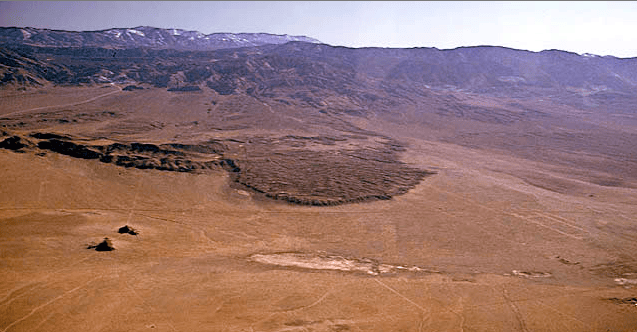
LUCERNE VALLEY – The Blackhawk Landslide, a large land mass said to have slid on a cushion of air, has generated curiosity since Ronald Shreve’s 1959 dissertation detailing a series of slides. This prehistoric slide is one of the largest known in North America.
Named after Blackhawk Mountain, the Blackhawk landslide covers about 30 square miles. The end of the slide can be seen from State Highway 247, about 10 miles east of Lucerne Valley.
According to Shreve, a large piece of rock became loose on the north slope of the mountain and slid down the side, moving 50 miles per hour, riding on compressed air, rather than water or mud.
Shreve hypothesizes various factors resulted in the Blackhawk landslide.
He says the first slide in the area occurred during the Pliocene epoch – 5.3 to 2.6 million years ago, caused by uplift and volcanic activity. Erosion over time and different materials of rock layered on top of each other led to several slides.
Shreve determined that air pushed the Blackhawk slide from well preserved physical features.
RELATED: Apple Valley Labyrinth!
Shortly after the slide occurred, small ponds developed in depressions on the surface. One of these brought about fresh-water mollusk shells that give a radiocarbon age of 17,400 years.
Shreve says that because sandstone no longer underlies limestone near the crest of the mountain, it is unlikely that a great landslide will ever occur in the Blackhawk area.
For more information about the Blackhawk landslide download Ronald Shreve’s Geology and Mechanics of the Blackhawk Landslide HERE.